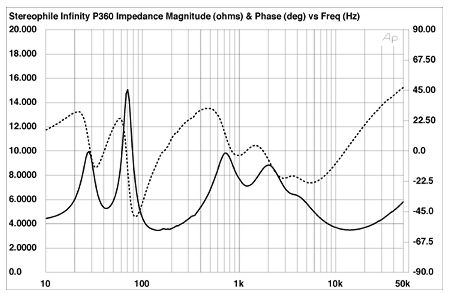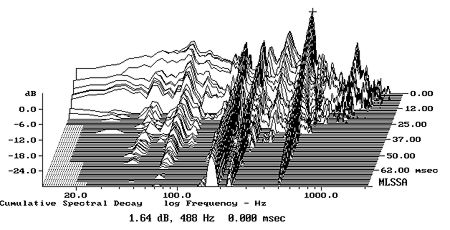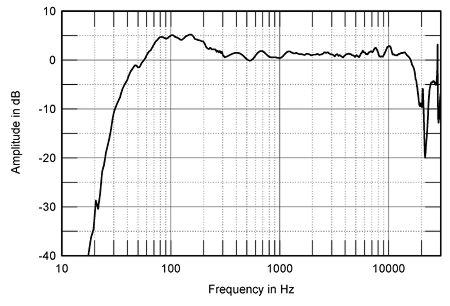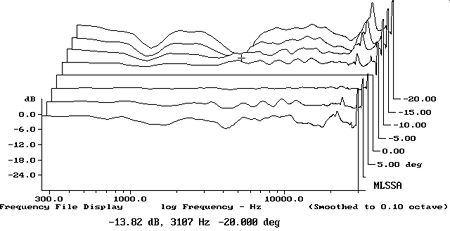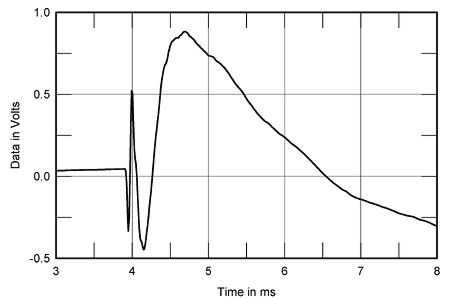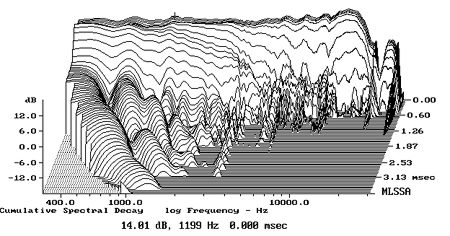| Columns Retired Columns & Blogs |
I recall reading this review when it first appeared, noting the unusually fine test results as regards frequency response and off-axis response.
There's a thrift store in town, frequently has recent audio gear, with a lot of Home Theater audio gear as of late. Last month they had a pair of Infinity Primus 360's for $39.99, a pair of the matching, shorter, 250's at $29.99 and a C25 center channel for $8.99. All very clean, with the only damage evident being a missing plastic post for one grill cover, which I removed anyway. Very few scuffs/nicks. On top of all that they also had an early Oppo Universal DVD for $25. Last year, found an Onkyo TX RS606 for $50, and a 3 small subs, including a Polk PSW 50 that seems to do most of the heavy lifting, around $30 a pop. I've got 5.3, 360 sound for a total of less than $300, wire included.
This all goes into the garage, reconfigured into a studio for painting. 20' x 14' x 8'. I've got the speakers raised off the floor so the tweeters are slightly above ear level, with the C25 turned on its side for better imaging. All speakers are crossed over to the subs at 80 hz with the Onkyo's onboard EQ raising mids and reducing treble slightly.
This is one of the best systems I've heard so far. Of course, there are audible flaws, but what's striking is how natural and grain-free vocals are and how dynamic everything is. Piano sound is unusually plausible. Raising the speakers off the floor takes out a bit of the boom, crossing over to the subs seems to get rid of the rest, having three subs loafing at low levels gives me organ pedals & makes the room shudder when playing Sarah McLachlan's "I Love You" from "Surfacing". However, there is a residual audible resonance around 4k that doesn't tamp down with the eq change, the tweeter being the one thing I would change in the speaker design if I could.
I've owned a few classic speakers, have heard many others, spent many years using Stax earspeakers with a matching tube energizer as a audio reference for recording. The Primus speakers, set up as they are now, are as musically informative as the Stax Earspeakers, with better imaging and dynamic scale.
I was looking today at the specs for the Wilson Audio Sabrina speaker—product of the year, this year—and compared the measurements for the Primus 360. While I have no doubt that the Sabrina does some things better than the Primus speakers [and at $17,000 they should], it appears that the Primus 360 does some things better than the Sabrina. In my case, at $39.99.
In any case, as far as I'm concerned, the Primus 360 is a classic.
